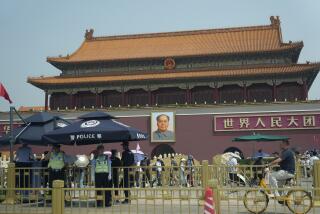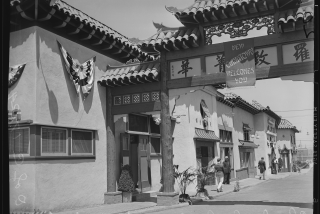In Beijing after dark, strange wares for sale at a bustling ‘ghost market’
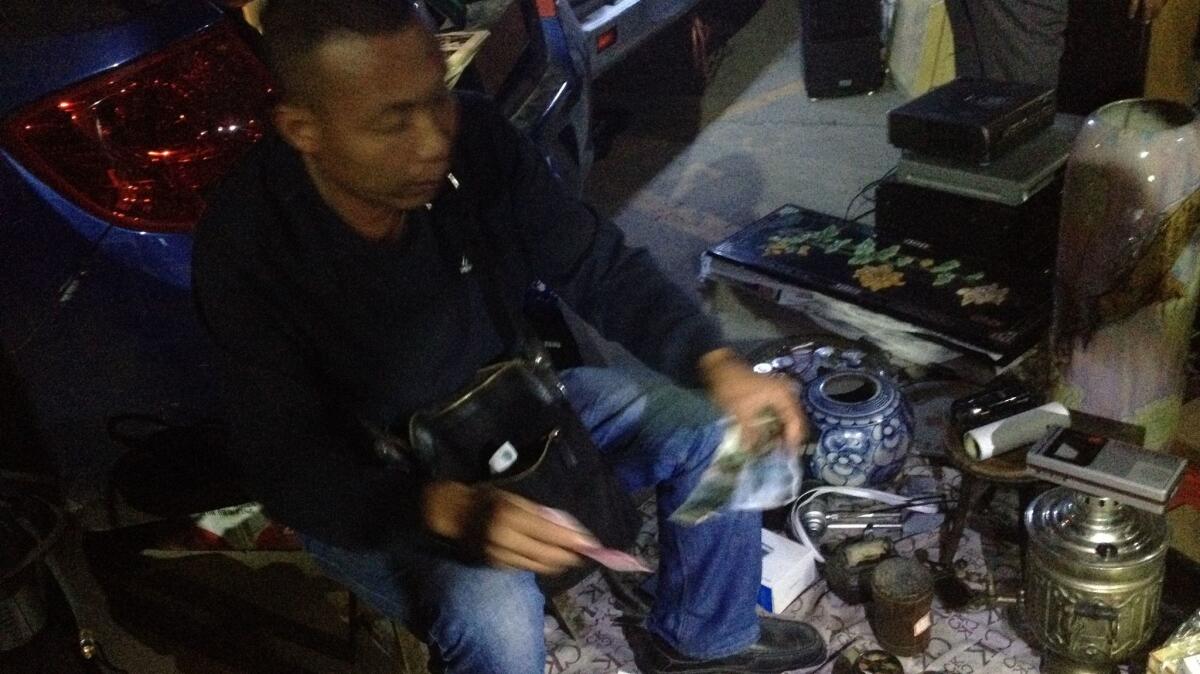
Reporting from BEIJING — We had gone to bed at 8 p.m. and set our alarms for 1:50 a.m. Rising sleepily, my colleague and I stepped out into Beijing’s smoggy darkness.
We were off to join the hawkers and gawkers and serious antique collectors who make the weekly nocturnal pilgrimage to the only true “ghost market” left in the Chinese capital. Officially, it opens for business at 3 a.m. every Wednesday and runs until the following afternoon. But everyone knows the best deals are at night.
Beijing, a city of 24-hour food stalls and infinite cheap wares — both real and counterfeit — is home to markets galore. Even as the Chinese become increasingly reliant on online shopping, there’s no limit to what you can buy in the open air: fresh-roasted chestnuts and (purportedly) handmade dolls, colorful iPhone cases and handmade dumplings boiled on the spot.
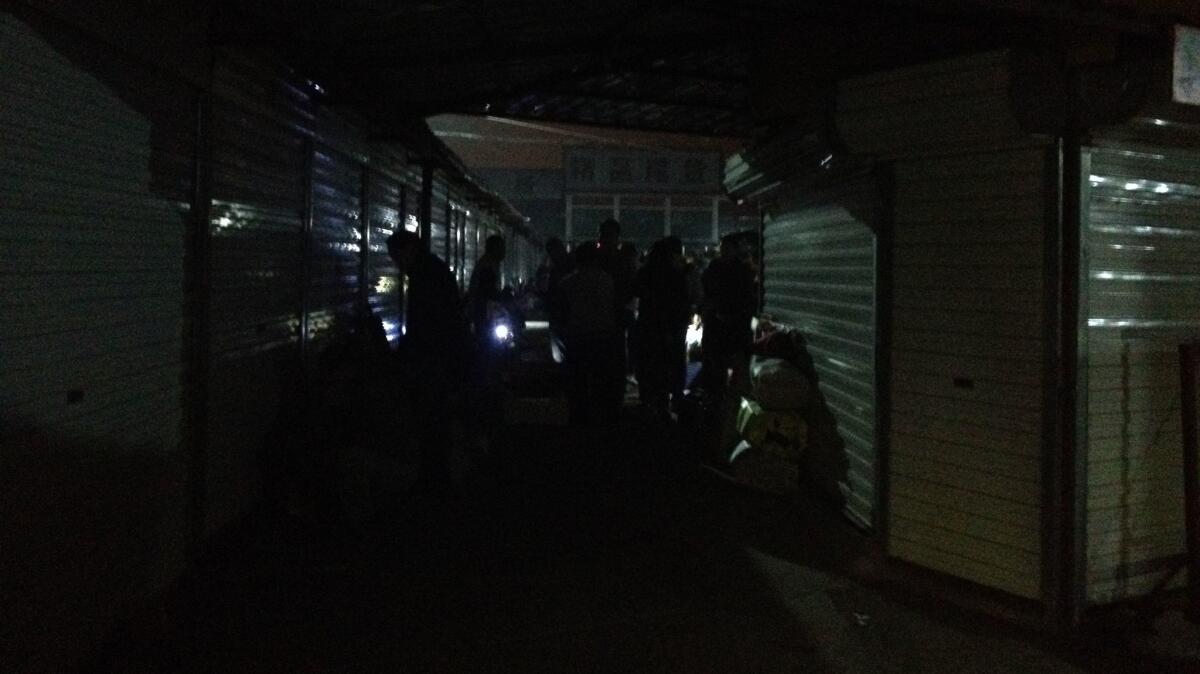
Yet none of the daytime venues, the ones you pass hurriedly on your way to work, hold the mystical allure of the ghost market at Beijing’s southern edge. The tradition is said to date to the Qing Dynasty, when downtrodden nobles sold family heirlooms under the cloak of darkness to keep their reputations intact.
These days, whispers suggest a second reason for the market’s eerie name. Some of the items for sale are believed to have been obtained by illegal means, through bribery, theft or grave robbing.
When we asked sellers where they got their goods, they responded without hesitation, “Online!”
We arrived about 2:30 a.m., behind several men who streamed past us holding large sacks and flashlights. Some wore headlamps, like spelunkers, and dragged small shopping carts. We followed them into a narrow street where masses of items were laid out in long rows on the ground — spilling out of trash bags, stacked haphazardly atop one another, scattered over blankets. There were rolled-up watercolor paintings and used stereos, long wooden pipes and what appeared to be a taxidermied fox.
Crowds hunched over these goods, handling them, inspecting them with their flashlights. “How much?” a chorus of voices asked over and over.
“I can give it to you for cheaper,” came the sellers’ answering cry.
“This is the best antique market in Beijing,” said Li Xiao, a regular in his 50s. “There’s a lot of people. It’s lively.” As he walked off to another vendor, he kicked a unicycle on the ground and said over his shoulder, “You can buy anything here.”
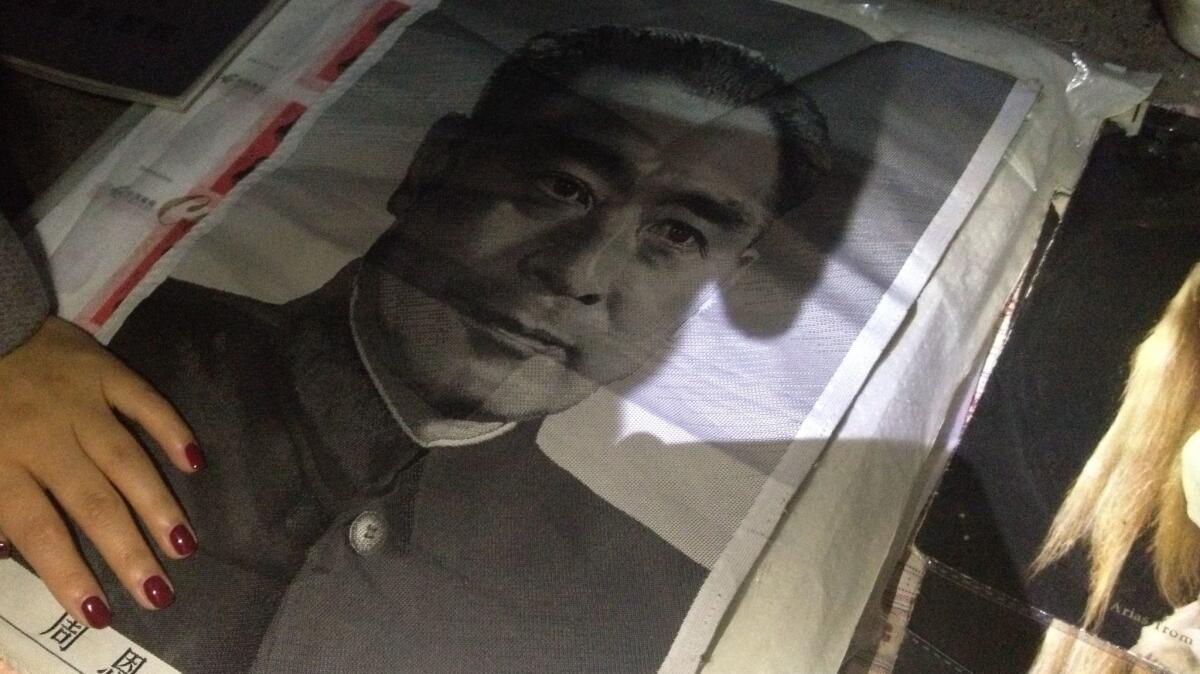
We were jostled aside by buyers who knew how to ascertain the authenticity of a jade pendant. Away from the commotion, Xian He, 34, sat behind some items arranged on a tarp: cassette tapes in piles; an old-fashioned metal alarm clock; colorful stamps with brown edges; a machine-sewn portrait of Zhou En-lai, the first premier of China; a vinyl record titled “Forward! Our Great Socialist Motherland.” Unlike most of the stalls around us, his had an apparent theme: nostalgia.
“I grew up in the ’80s,” he said. “Life is better now, but sometimes we still long for the past.”
Xian used to work for a book printer. He was particularly fond of comic books that condensed classic Chinese tales into brightly illustrated stories. He began collecting these, buying them online and at markets, and he eventually amassed a collection large enough to start selling.
He said he sought artifacts from the Cultural Revolution, which lasted from 1966 until the period after Chairman Mao Tse-tung’s death in 1976, because “people are always looking for these things.” Now Xian is a professional collector and sets up shop at the ghost market year-round.
Other sellers were unsentimental and all business. Wang Songhua, 40, was lugging a box of traditional-style paintings to his car. That night alone, he’d purchased five boxes of paintings, which he hoped to sell for a hefty profit (anywhere from $150 to $1,500) during the day, thanks to the nighttime discount.
Another vendor had a thick, needle-shaped instrument. When we asked what it was, the seller shrugged apathetically, taking a slow puff from his cigarette.
“No idea, I just found it,” he said. Someone passing by barked, “It’s for measuring water temperature.”
The later it got, the larger the crowd grew. Many were unfazed by the curious hours of operation, including visitors who had work the next day. For those like Li who loved the ghost market, it was worth shifting their sleep schedule every week.
Or even driving from another province. Yang Fan, 35, came with his friends from Tangshan in Hebei province, more than 100 miles away, to experience the ghost market for the first time. He was there to buy hiking equipment.
This was China, so the vendors were outfitted with a mix of old and new. Aside from Ming vases, red Mao badges and clay Buddhist figurines, there were used iPhones, laptop chargers and imported skin care products. One seller scoffed, offended, when asked whether a Chanel No. 5 perfume being sold for $7.50 was real.
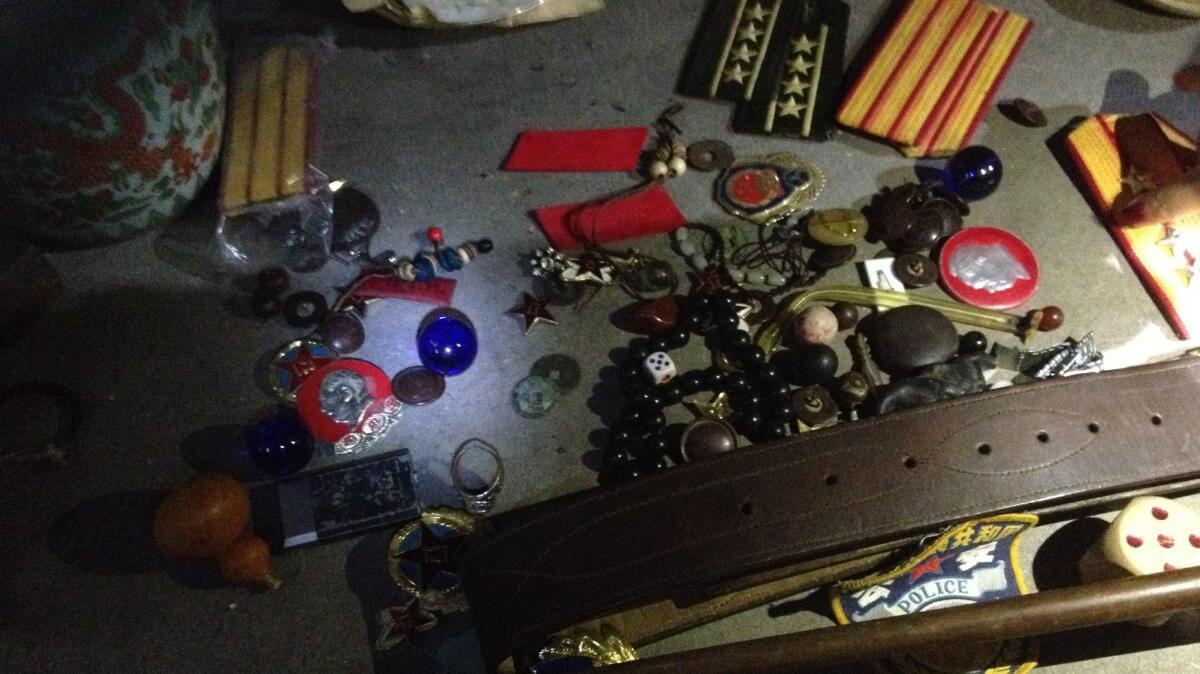
We encountered only one thing of dubious legality: a woman’s ID card, with an expiration date of March 15, 2021. The seller didn’t respond when asked what it might be used for.
Just before dawn we saw the head.
Propped against a plastic chair, it glowed white against the glare of swinging flashlights: a bust of Michelangelo’s David scowling down at the sundry relics splayed around him. A popular vendor whom everyone called Old Li said he picked up the sculpture after it was thrown out by a neighbor.
Looking at the oversize head, Li, 55, asked, “Who is he?”
Wang is a special correspondent. Yingzhi Yang in The Times’ Beijing bureau contributed to this report.
ALSO
Mystery deepens over apparent abduction of Chinese billionaire in Hong Kong
A tale of two cities: What happened when factory jobs moved from Warren, Ohio, to Juarez, Mexico
Iran’s newest fighters are sidewalk vendors, ‘ready to struggle to our last drop of blood’
More to Read
Sign up for Essential California
The most important California stories and recommendations in your inbox every morning.
You may occasionally receive promotional content from the Los Angeles Times.
